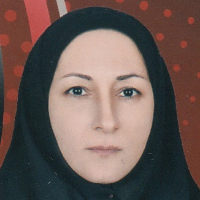Investigating the attraction of flowering plants for predatory flies (Dip., Syrphidae) in some agricultural and horticultural fields of Kermanshah province
Hoverflies can play an important role in aphid biological control. Adults are dependent on flower pollen and nectar to survive. The plants providing these sources for species of Eupoedes corollae, Episyrphus balteatus, Sphaerophoria scripta and Scaeva albomaculata in several agro-ecosystems including wheat, canola, apple and stone fruit trees in Kermanshah province were studied during 2015-16. Their visit numbers on the target plants in each square meter were recorded at each sampling time in 10 replications within 5 minutes. The experiments were carried out in a completely randomized, unbalanced design with respect to the canopy cover percentage of each plant from early spring until the plants were dried completely. The results showed that Geranium tuberosum, Capsella bursa-pastoris, Lamium amplexicaule, Senecio vernalis and Alyssum hirsutum were the most attractive plants for E. corollae respectively. For E. balteatus, the species, C. bursa-pastoris, Sinapis arvensis, Erodium cicutarium, G. tuberosum and Descurainia Sophia, were the best attractive plants respectively. For Sph. Scripta, the plants, C. bursa-pastoris, Brassica napus, S. arvensis, Rapistrum rugosum and G. tuberosum had the highest attraction respectively. Also for S. albomaculata, the species of Cardaria draba, Raphanus raphanistrum, Brassica napus, C. bursa -pastoris and G. tuberosum were the highest attractive respectively. In conclusion, G. tuberosum and C. bursa-pastoris were the most attractive plants for all studied syrphid species in all of the agro-ecosystems.
Hoverflies , aphids , pollen , Nectar , Attractive plants
-
Evaluation the efficacy of selective herbicides in transplanted sugar beet (Beta vulgaris L.) and determining the best time of their application
H. Najafi *, M.H. Hadizadeh, M. Vassi, Valiollah Yosefabadi
Journal of Sugar Beet, -
Study of tank mix application of dual propose and broad leaf herbicides for weed control in wheat fields
*, mohammad Ali Baghestani, Mehdi Minbashi moeni
Iranian Journal of Field Crop Science,


